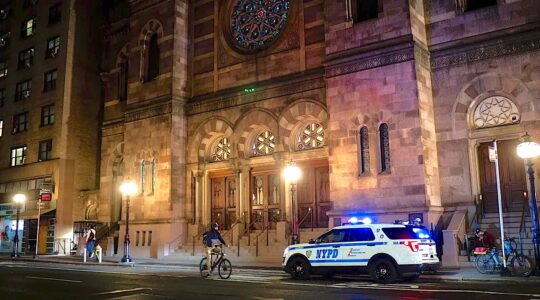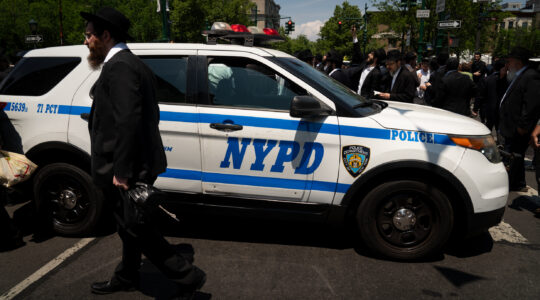Except for anniversaries, timing is an overlooked quality in the museum world. Perhaps this is understandable — with exhibits planned years in advance, there’s no predicting how culturally relevant a show might be when it finally opens. Yet when the Museum of Jewish Heritage opens its main spring show, “Filming the Camps: John Ford, Samuel Fuller, George Stevens: From Hollywood to Nuremberg,” they may still be able to ride the coattails of this year’s Oscars, which are celebrating retrograde filmmaking. The year’s major nominees — “The Artist,” a silent film, and “Hugo,” about the birth of cinema in France — have made many movie fans look back at the cinema’s past. The Museum of Jewish Heritage’s exhibit will too: it focuses on the little-known documentary films about liberated concentration camps, the Nuremberg Trials, and other World War II events by mid-century titans of American film.
Filmmakers like John Ford, whose Oscar-winning movies like “Stagecoach” (1939), which made a star of John Wayne, enlisted in the U.S. Navy during the Second World War. Famously, he was there for D-Day, when the U.S. and Allied forces stormed Normandy beach. Footage he took there and at other wartime locations have landed in the Library of Congress archives, from which many of the films on view have been borrowed. George Stevens, another Oscar-winning director—one for “A Place in the Sun” (1951), another for “Shane” (1953), and a nominee for best director with “Diary of Anne Frank” (1959) — also did his part in the war. He joined the U.S. Army Signal Corps, heading its film unit, documenting iconic and harrowing footage like the liberation of the Dachau concentration camp. He also filmed the trials at Nuremberg.
Their documentary work will be on view, as will wartime work of the Jewish filmmaker Samuel Fuller (né Rabinovitz). Before the war, Fuller’s films were widely admired, but McCarthy-era blacklisting did him in. However, to critics and film auteurs like Jean-Luc Godard, Wim Wenders and Quentin Tarantino, he has remained an icon. Perhaps his most admired work, “The Big Red One” (1980), a semi-autobiographical film about World War II, is an apt introduction to the work on view in this exhibit. The museum will showcase amateur RAW footage Fuller took of the Nazi death camp at Falkenau, which Fuller helped liberate as an enlisted American solider. It is because of that footage that the world has been able to bear witness to some of the most haunting, visceral images ever made of the Nazi death machine. And it is because of the museum’s new show that we will be able to witness it once again.
“Filming the Camps: John Ford, Samuel Fuller, George Stevens: From Hollywood to Nuremberg” runs at the Museum of Jewish Heritage – A Living Memorial to the Holocaust from March 22 to Oct. 14.
The New York Jewish Week brings you the stories behind the headlines, keeping you connected to Jewish life in New York. Help sustain the reporting you trust by donating today.




